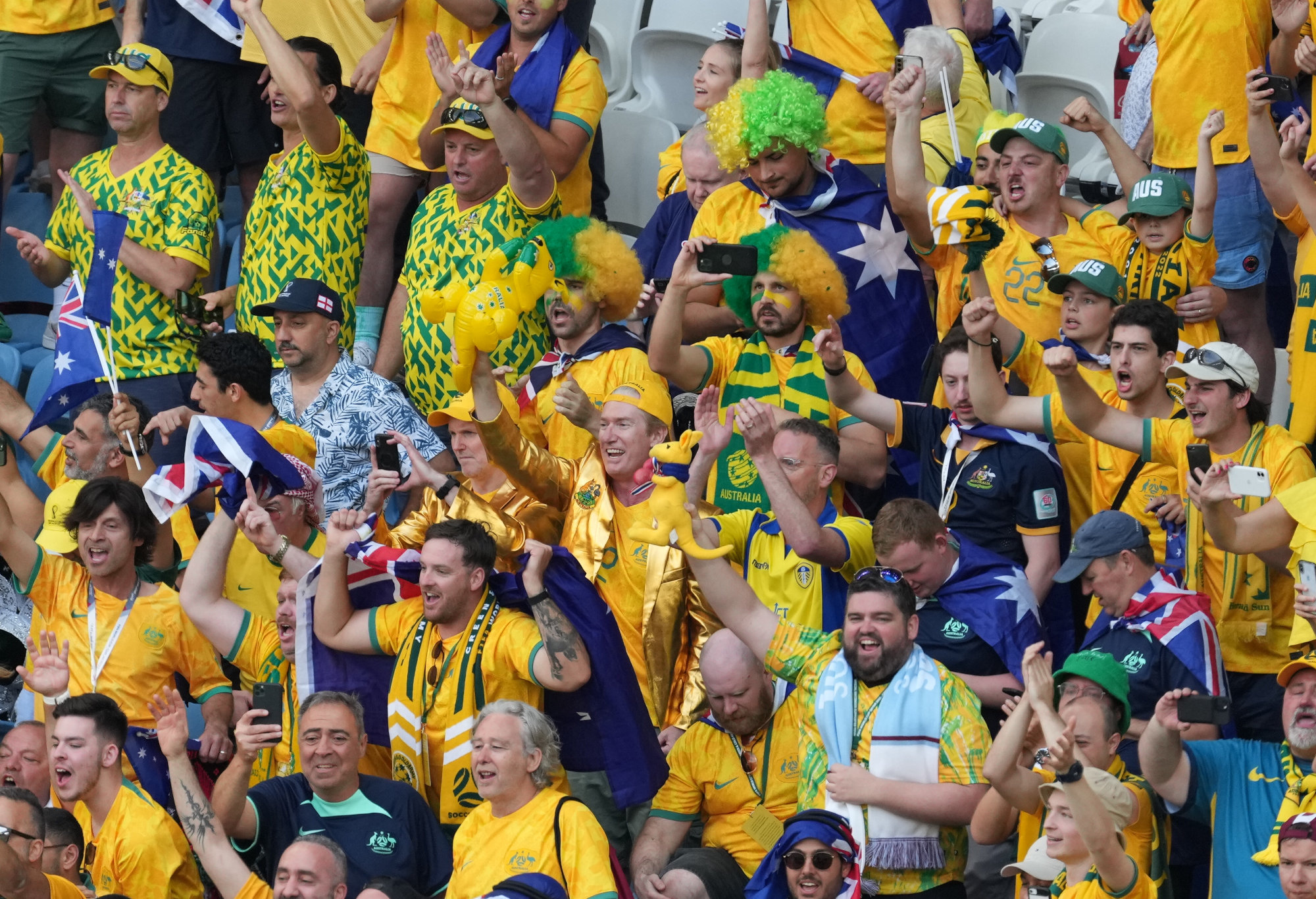The organisers of the FIFA Women’s World Cup in 2023 have a challenge on their hands to make the tournament ‘the best World Cup ever’, but there are some fantastic lessons to be learned from the 2022 edition of the men’s world cup, still taking place in Doha.
A successful major tournament is a successful exercise in the management and movement of people of all different types, and the match day experience is key to the enjoyment of the event as a whole.
Did Qatar get it right? Or is there room for improvement?
Australia and New Zealand will welcome a massive influx of visitors next year from 30 countries, transiting through and staying in the major cities of each country. Every one of these visitors will be attending games. There must be nothing to prevent these football tourists from remembering the football action on the field, and nothing to soil those memories of what is expected to be a festival of top-flight international football.
In Qatar, the football has been played at eight very different stadiums, all branded in the same way, each pre-game following a magical formula culminating in the ‘Let’s get down, let’s get down to business’ anthem and a countdown from ten to one that has sometimes worked.
But getting to and travelling away from each one of these stadiums has provided us with some unwanted logistical issues. The Socceroos’ home stadium was the marvellously named Al Janoub. In the shape of a meringue, and as picturesque a stadium as you can get in the fading sun, is it unfortunately situated a long way from any transport.
The match day process saw fans reach the last stop of the red metro line at Al Wakra, they were then herded onto shuttle buses for a 15-minute bus ride to the periphery of the stadium. Once near the stadium, the fans were deposited and faced another ten-minute walk to the stadium security checks into what could be a queue of up to 45 minutes.
That’s an epic journey.
Once the games were over, the idea appeared to be to stall a good portion of the fans by giving them a ‘fan fest’. If you could stick around for another hour post-game, you would quite probably miss any peak hour. With alcohol not an option, the fans were simply disinterested in an unknown DJ trying to whip them up into a frenzy and most people instead joined the long, snaking line for the shuttle buses and ultimately get back onto the metro line to civilisation.
What this created was a match day that involved up to two hours of travel to get to the stadium, and another two hours to get out again.
With the Al Thumama stadium, the venue for such games as the Spanish demolition of Costa Rica, almost the same applied, this time taking the train almost to the end of the red line and then taking a 15-minute bus shuttle. This one was actually quite annoying – the shuttle dropped everyone about 3km from the stadium, with a journey on foot around a desolate block of land in the dark, through some semi-suburban streets and then finally along a huge boulevard that seemed never-ending.
This one was way too far, and it was difficult to understand the logic of the distance between the metro, bus and stadium. Just stop the buses closer, no big deal!
Working north to Stadium 974, the one with all the shipping containers and venue for Switzerland’s success against Serbia, this one was walking distance to metro station Ras Bu Abboud, at the end of the gold line and not far from the main tourist hub of Souq Waqif. Access to the stadium was controlled by long meandering walking routes that took the fans on a winding circuit to the stadium.
Getting back out to the metro after the game was another long walk, and the crowds all leaving at roughly the same time made it a very slow process as the ten-wide queue was funnelled into a single file.
The Khalifa International Stadium is also on the gold metro line to the west of the city and is dominated by a massive tower, visible from around town and proving that Doha is in fact a compact city. Access is via Sport City metro, and the walk is not too arduous to the stadium. If you come on a bus, however, you’re in for another 3 to 4km walk from the bus stop. Again, all the roads are closed off and it is a very straightforward walk, but it is excessively long and frankly unnecessary.
Those getting the metro back after the game face the issue of queueing with thousands of others, and it can take upwards of 45 minutes to get from the stadium gate to the metro door. Not great if you have a two-hour window to get to the next game.
Education City stadium should be a dream – it has its own metro station and access to the stadium pre-game is easy. It’s only when the fans try to retrace their steps to the metro after the game that the problems occur. One poor fan recounted a wait of over an hour, stuck in a horribly-managed queue, with children and disabled people in the crush with no access to water or toilets.
At the end of the same metro line, just one metro stop away is Ahmad Bin Ali Stadium, scene of Australia’s round of 16 game with Argentina. From the metro you can see the stadium in front of you. What they don’t tell you is that, if you arrive after a certain time, the entrance to the stadium is closed off, and all foot traffic is re-routed to a gate over a kilometre away.

(Photo by Ercin Erturk/Anadolu Agency via Getty Images)
So, if you are running late you are punished for it, with little chance of making it through security to get to your seat in time for kick-off.
Access to the metro after the game is also traumatic, with a massive snaking queue that eventually splits into two and funnels into a single file to drip-feed fans into the waiting metro.
The final two stadiums are polar opposites. Lusail Stadium, the scene of Argentina v Saudi Arabia and Brazil v Mexico, as well as being the host venue for the World Cup final, is the easiest of them all to get to. Go to the nicer end of the red metro line and the stadium is right in front of you. Yes, it has the same issue after the game where everyone just wants to get on the metro, so a very slow-moving and frustrating wait in a line, but waiting in that queue is not a patch on getting to Al Bayt Stadium.
The dread on the face of knowing fans when they have to get out to the northernmost stadium is telling. Arriving at Lusail Stadium, fans are redirected to a long walk to catch a shuttle bus. The bus takes 40 minutes. Once dropped off, it’s another long walk to this impressive stadium, the scene of the opening ceremony and high-profile games such as England v USA. A 10pm kick-off, and the earliest you would be back in the centre of Doha would be approaching 3am.
Fast forward to July next year, with Australia and New Zealand hosting the women’s world cup, and we will hopefully have full houses at some of our iconic venues. We must get it right. Most fans in Qatar will have a horror story about missing kick-off, being caught in a never-moving line of people, or stadium security checks taking forever.
Like Australia, the car remains king, and the huge expanses of nothing in Qatar that are converted into parking stations have been relatively easy to navigate. We don’t have that luxury here, but we also don’t have the pressure of having multiple games in the same city on any given day. How would you feel if you were in a queue for an hour at Sydney Olympic Park train station, with a plane to catch in a few hours?
The insistence of FIFA to fully screen fans, as if they were going through security at the airport, also adds to the tension of the pre-game experience. Is there a better way to manage it? Just when you’re rejoicing at arriving on time at the stadium, you’re faced with another long queue to get through security.
Hope turns to despair as fans are sent in different directions, security staff unsure as to what they’re looking for and unable to decipher the potentially political wording on flags, thus holding up the whole process for everyone. I’m confident that Australia and New Zealand can deliver, but we must cater for every eventuality and make sure that the positive football experiences are those that remain in the memories of fans when they look back on the 2023 Women’s World Cup.


































































































